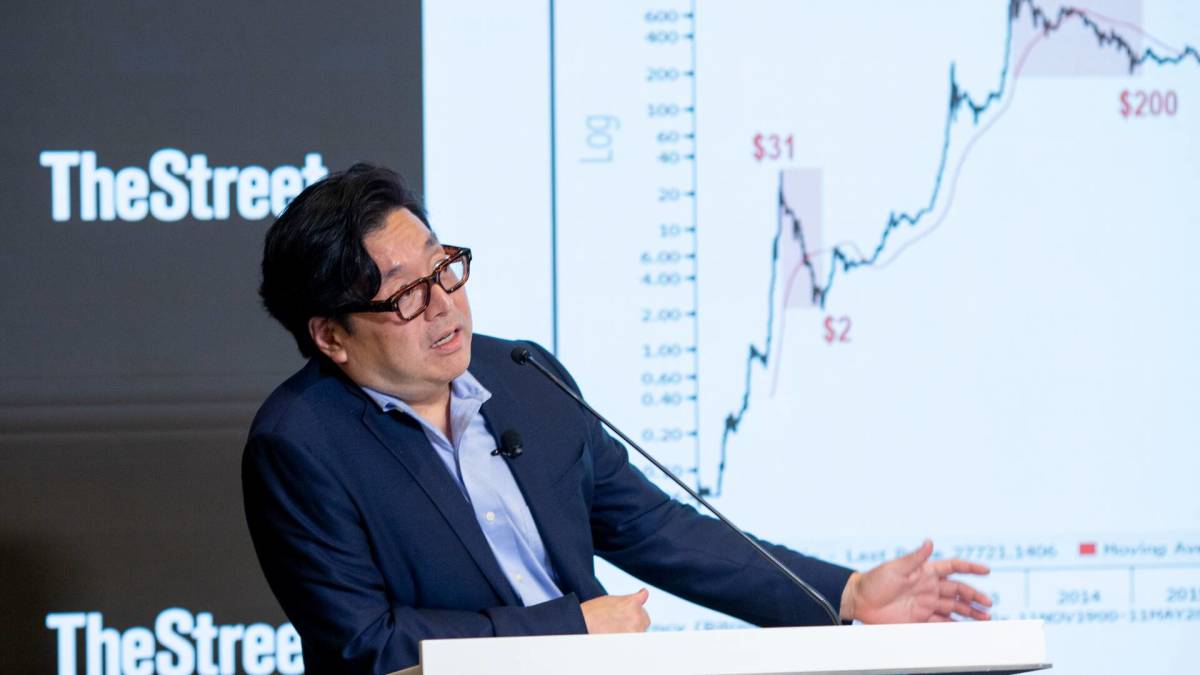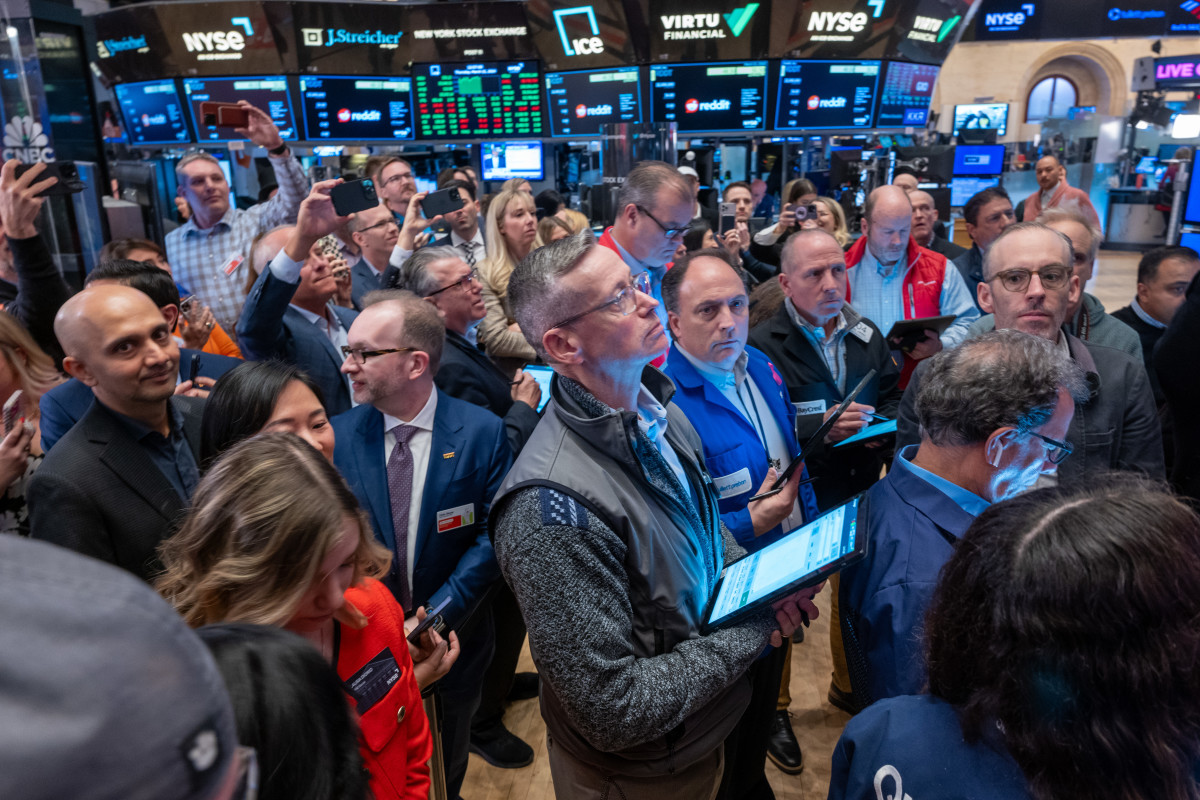
Thomas Lee, one of Wall Street's most bullish market analysts, stands by his view that the small-cap Russell 2000 Index will be up 50% this year.
Lee has been making this prediction since the end of 2023, as stocks were enjoying a huge end-of-year rally. He made it again this past week.
The co-founder and head of research at FundStrat Global Advisors may ultimately be right. But the Russell must overcome significant hurdles.
Lee's brash predictions
Lee is an ambitious and confident financial analyst.
In summer 2022, when stocks were tanking, he was predicting a big gain for stocks by the end of the year. He was wrong then, mostly because the Federal Reserve was engaged in an intense campaign to curb inflation.
In midyear 2023, with stocks going nowhere, Lee again predicted a big year-end rally. One could practically hear all the guffaws on Wall Street.
Related: Stock Market Today: Stocks' record run on pause as bulls take a breath
This time, however, Tom Lee was spot on. To wit:
- The S&P 500 finished the year up 24.2%.
- The Nasdaq Composite jumped 43.4%.
- The Dow Jones Industrial Average added 13.7%.
- The Russell 2000 ended with a 15.1% gain, after being down as much as 7.1% on Oct. 27, 2023. The gain from that low: 23.8%.
There were, of course, two catalysts at work:
- The Fed's hint in the autumn of 2023 it was done raising interest rates. In December, Fed Chairman Jerome Powell said rates would probably come down this year.
- Exploding investor interest in the potential economic impacts of artificial intelligence.
The Fed is the key, always the key
Lee still argues the Russell will rise because:
- Rates will, in fact, come down.
- Stocks in the Russell 2000 are selling at a big discount to stocks in the S&P 500 or, say, the Nasdaq 100, where Nvidia (NVDA) , Microsoft (MSFT) , Meta Platforms (META) and other high flyers live.
- Lots of cash is on the sidelines in money markets and managed by investors waiting to pounce on bargains that might produce outsized returns.
Which brings us the current situation as the first quarter enters its last week.
The Fed is still promising to cut rates but won't say when. So, its key federal funds rate is still at 5.25% to 5.5%, a level reached in July 2023.
The federal funds rate is what the Fed wants banks to charge each other when they ensure their deposits are backed up. It is the foundation on which all U.S. interest rates are derived.
The S&P 500, Nasdaq Composite and Nasdaq 100 are all up 9% or better this year. The Dow is up 4.7%.
The Russell 1000 Index, which tracks most of the largest stocks (as the S&P 500 does), is up 9.8%.
But the Russell 2000 has struggled to just a 2.52% gain this year, despite some astonishing gains from some of its component stocks.
More on markets and stocks
- Analyst unveils Google stock price target after Apple reports
- Cathie Wood trades almost $100 million of 2 big tech stocks
- Tesla stock slumps after startling China decision
Super Micro Computer (SMCI) , maker of high-end computers used in AI processes, is up 242% alone, sports a market capitalization of $54.4 billion and has replaced venerable appliance maker Whirlpool (WHR) in the S&P 500.
Viking Therapeutics (VKTX) , a San Diego-based biotech, is up 274%. It has a market capitalization of $6.9 billion.
But the Russell's roster contains many stocks of companies struggling with:
- Too much debt and too little of fixed-rate products.
- Erratic or lower-than-expected revenue streams.
- Weak managements who brought their companies public before they were competent in the job demands.
In fact, only 801 Russell 2000 stocks of 2000 total were up on the year, as of March 22.

The biggest loser so far is Fisker (FSR) , the electric-vehicle maker that's struggling to stay afloat. The shares, as of March 22, were down 92.9% for the year.
The second-worst performer: Amylyx Pharmaceuticals (AMLX) , down 81.4%. The problem: a critical study on a possible treatment for amyotrophic lateral sclerosis (known popularly as Lou Gehrig's disease) failed meet to key performance measures.
What can improve the Russell 2000's results
Start with lower rates and soon. That depends on the Fed believing inflation is moving steadily (though probably bumpily) to 2%-a-year rate.
Then the issues are how many rate cuts and when they occur. And will it be enough to attract smart money.
When 2024 opened, there was a lot of talk among Wall Street traders that the Fed would cut the federal funds rate six times for the year, putting it on approach to 4%.
Now the talk is just three cuts and probably 0.25 percentage point at a time, which translates to an end rate of 4.5% to 4.75%.
And Jerome Powell and the Fed are not offering a specific timetable.
So, we don't know if Tom Lee will be right. But he is tough to bet against.
Related: Veteran fund manager picks favorite stocks for 2024







